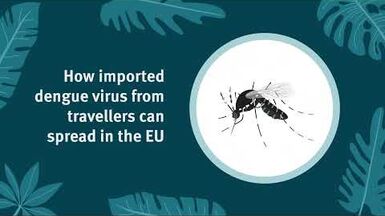Ebola virus disease ad hoc case definition for reporting in the EU
The case definition aims to classify Ebola virus disease (EVD) cases for epidemiological purpose and was developed in an ad hoc manner during the 2014-2016 Ebola Outbreak in West Africa.
This ad hoc case definition relies on clinical, epidemiological, laboratory and high-risk exposure criteria, allowing the identification of persons required to be investigated for EVD and the differentiation of probable and confirmed cases for epidemiological reporting.
For routine indicator-based surveillance, see the 2018 case definition for viral haemorrhagic fevers.
Criteria
Clinical criteria
In the context of the 2014-2016 Ebola outbreak in West Africa, any person presenting or having presented before death with:
- Fever ≥ 386°C
AND any of the following:
- Severe headache;
- Vomiting, diarrhoea, abdominal pain;
- Unexplained haemorrhagic manifestations in various forms;
- Multi-organ failure.
OR
A person who died suddenly and inexplicably
Laboratory criteria
Any of the following:
- Detection of Ebola virus nucleic acid in a clinical specimen and confirmation by sequencing or a second assay on different genomic targets.
- Isolation of Ebola virus from a clinical specimen.
Epidemiological criteria
In the 21 days before the onset of symptoms:
- having been in an area with community transmission;
OR
- having had contact with a probable or confirmed EVD case.
High-risk exposure criteria
Any of the following:
- close face-to-face contact (e.g. within one metre) without appropriate personal protective equipment (including eye protection) with a probable or confirmed EVD case who was coughing, vomiting, bleeding, or who had diarrhoea; or had unprotected sexual contact with a case up to three months after recovery;
- direct contact with any material soiled by bodily fluids from a probable or confirmed EVD case;
- percutaneous injury (e.g. with needle) or mucosal exposure to bodily fluids, tissues or laboratory specimens of a probable or confirmed case;
- participation in funeral rites with direct exposure to human remains in or from an affected area without appropriate personal protective equipment;
- direct contact with bats, rodents, primates, living or dead, in or from EVD affected areas, or bushmeat.
Person under investigation
A person
- meeting the clinical and the epidemiological criteria;
OR
- with high-risk exposure and any of the listed symptoms, including fever of any grade.
Case classification for reporting at EU level
Only confirmed cases are to be reported at the European level using the Early Warning and Response System. The 'probable case' classification is provided for information only.
Possible case
Not Applicable.
Probable case
A person meeting the clinical and high-risk exposure criteria.
Confirmed case
A person meeting the laboratory criteria.
References
EU case definition for viral haemorrhagic fevers. Commission Implementing Decision 2012/506/EU of 8 August 2012, amending Decision 2002/253/EC laying down case definitions for reporting communicable diseases to the Community network under Decision No 2119/98/EC of the European Parliament and of the Council. (p48)




